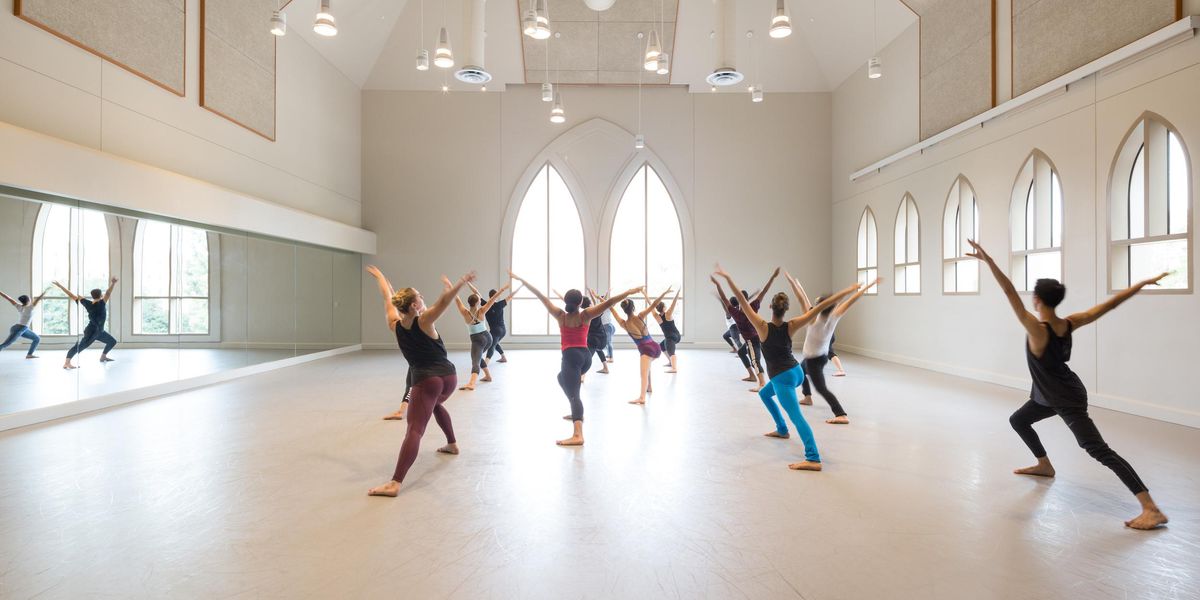Better on Zoom: This Series Makes the Most of Going Virtual
Ballet can distance us from performers. The difficulty of the technique and the elusive artistry can make them seem immortal. But in New York City Center’s Studio 5 Great American Ballerina series, we observe them as down-to-earth and hard-working—willing, by dint of the format, to take criticism and incorporate it, live. And for those viewers who are not dancers, the give-and-take is a terrific glimpse of the minutiae and grinding work involved in shaping a stellar individual performance.
This smart, vibrant adaptation of the live series of lecture/demonstrations held regularly in New York City Center’s fifth-floor studio is curated and hosted by critic Alastair Macaulay. The first two events featured principal dancers Tiler Peck and Sara Mearns, from New York City Ballet, rehearsing passages and receiving coaching from past principals with experience in the roles. The third featured Peck, Mearns and Misty Copeland in conversation, discussing a breadth of topics.
Three more are slated for September: Peck, with Stephanie Saland, rehearsing a segment from Dances at a Gathering (September 16); Mearns, who will be working on new solo material with choreographer Pam Tanowitz (September 23); and Copeland, working on the role of Juliet with Alessandra Ferri (September 30).
In contrast to many online events, the format makes the most of the medium. The ability to show close-up views of the dancers provides a superb look at what they’re trying to communicate, whereas at in-person Studio 5 events, it can be difficult to see such detail. The DIY feel of Zoom actually suits the rehearsal setting.
City Center VP of programming Stanford Makishi notes: “There is something about our virtual Studio 5 programs that feels even more intimate than our live, in-studio events, with all participants occupying the same-sized rectangle on our screens at home. That is not something that we could ever have anticipated to work in our favor.” The thousands of views—in contrast to the 150 or so audience members who would normally attend in person—also speak to the format’s potential.
In July, Peck worked with former NYCB principal Merrill Ashley on passages from the Sugarplum Fairy solo in The Nutcracker, the first movement from Symphony in C and a passage from Divertimento No. 15. In working on the solo from Symphony in C, Ashley told Peck to push off her back leg more in piqué: “It gives it more authority, and it’s bigger and smoother.” Peck incorporated the note immediately, injecting more of a plush and assertive presence.
Nina Ananiashvili, a beloved principal with American Ballet Theatre for many years, coached Mearns in Swan Lake‘s dual role of Odette/Odile. Although the two had never worked together, the shared roles gave them an instant bond. Mearns’ ferocity and controlled abandon make her the ideal swan. But Ananiashvili imparted advice that Mearns immediately integrated to enrich her interpretation—that the back must always be beautiful and express emotion, and to elongate her shoulder/arm position to emphasize the length of the line.
When critiquing Mearns, Ananiashvili referred to the notes she once received from Marina Semyonova, showing the historical lineage of ballet.
The August 13 conversation between Mearns, Peck and Copeland, led by Macaulay, allowed a glimpse into their mindsets. Topics ranged widely—whether they go see other ballerinas perform, how diversity is changing the art form, how they’ve been working during the lockdown.
As reliant as dance is on video as a teaching tool—particularly now—these sessions show that there is really no substitute for person-to-person coaching to impart a fuller artistry. The Studio 5 series takes advantage of both.




